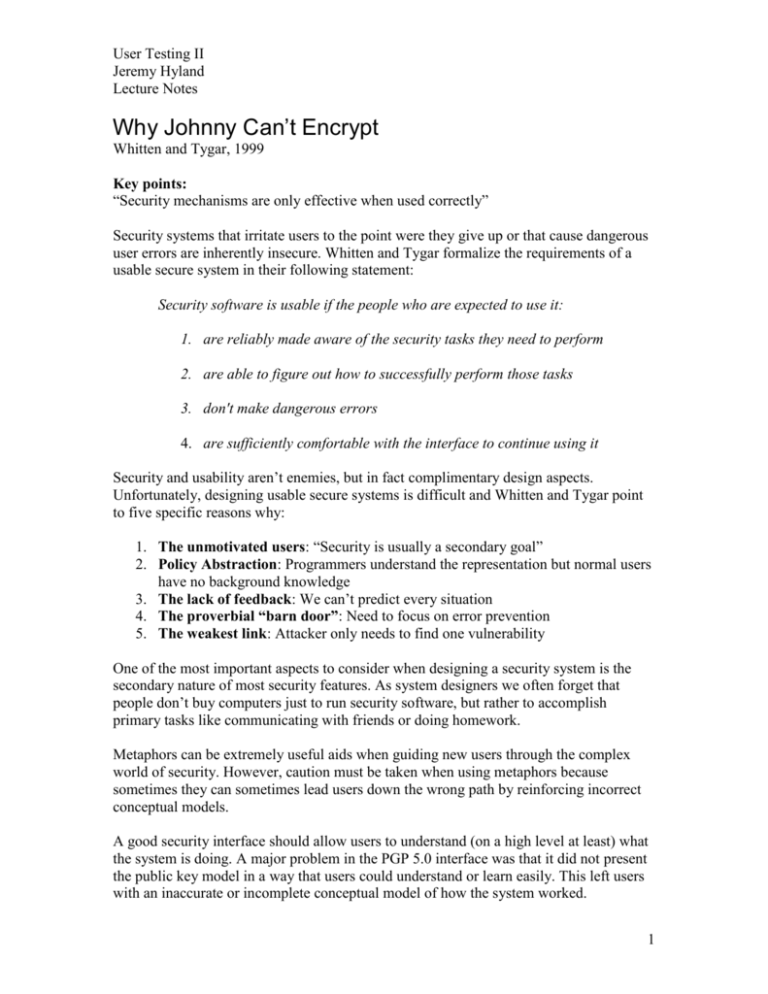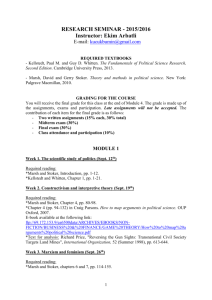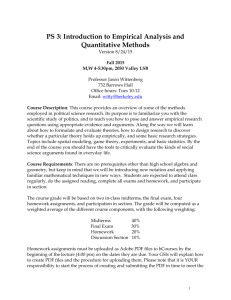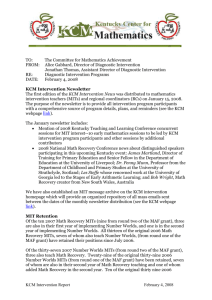Why Johnny Can`t Encrypt
advertisement

User Testing II Jeremy Hyland Lecture Notes Why Johnny Can’t Encrypt Whitten and Tygar, 1999 Key points: “Security mechanisms are only effective when used correctly” Security systems that irritate users to the point were they give up or that cause dangerous user errors are inherently insecure. Whitten and Tygar formalize the requirements of a usable secure system in their following statement: Security software is usable if the people who are expected to use it: 1. are reliably made aware of the security tasks they need to perform 2. are able to figure out how to successfully perform those tasks 3. don't make dangerous errors 4. are sufficiently comfortable with the interface to continue using it Security and usability aren’t enemies, but in fact complimentary design aspects. Unfortunately, designing usable secure systems is difficult and Whitten and Tygar point to five specific reasons why: 1. The unmotivated users: “Security is usually a secondary goal” 2. Policy Abstraction: Programmers understand the representation but normal users have no background knowledge 3. The lack of feedback: We can’t predict every situation 4. The proverbial “barn door”: Need to focus on error prevention 5. The weakest link: Attacker only needs to find one vulnerability One of the most important aspects to consider when designing a security system is the secondary nature of most security features. As system designers we often forget that people don’t buy computers just to run security software, but rather to accomplish primary tasks like communicating with friends or doing homework. Metaphors can be extremely useful aids when guiding new users through the complex world of security. However, caution must be taken when using metaphors because sometimes they can sometimes lead users down the wrong path by reinforcing incorrect conceptual models. A good security interface should allow users to understand (on a high level at least) what the system is doing. A major problem in the PGP 5.0 interface was that it did not present the public key model in a way that users could understand or learn easily. This left users with an inaccurate or incomplete conceptual model of how the system worked. 1 User Testing II Jeremy Hyland Lecture Notes Johnny 2 Garfinkel and Miller, 2005 Key points: “….the fundamental usability barriers that Whitten identified could be overcome by replacing the underlying third-party certification model with Key Continuity Management.” There were lots of problems with the PGP 5.0 interface, but Garfinkel and Miller feel that a key issue was the difficult nature of key model PGP 5.0 was based upon. They also state that many of the interface problems identified by Whitten and Tygar have been fixed in new email clients. In fact the encryption process has become relatively seamless once a user gets a Certificate. Now the biggest problem is actually obtaining the Certificate which can be a very painful process. Garfinkel and Miller advocate Key Continuity Management or KCM as a way around this complexity. Garfinkel and Miller test the effectiveness of a prototype KCM system, not just based on usability, but also in its ability to protect users from attacks. The prototype has a number of interesting features worth mentioning: Tight email client integration Visual cues in the form of border colors that alert users to encryption status Basic automated Key distribution The Johnny 2 user test was larger and more formalized then the original. Users were broken into 3 test groups: 1. No KCM – All messages were displayed in the same color border 2. Color – The border color features were enabled 3. Color+Briefing - The border color features were enabled and users were given a brief tutorial indicating what they meant The results of the test showed that the new encrypting system was indeed very learnable. No users had difficultly with the basics of email encrypting/decrypting. However results did vary when it came to withstanding the simulated attacks: 1. No group was able to avoid attacks 100% of the time 2. The no KCM group had the hardest time resisting new key attacks and unencrypted message attacks 3. All groups had trouble with the new identity attack Garfinkel and Miller conclude that although we have come a long way in improving the basic usability of encrypted email systems, more work is needed to understand how to successfully warn users of potential attacks. 2











